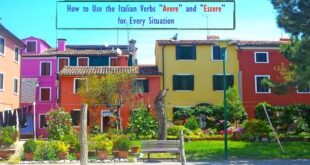My parents, Cataldo and Santa DeAngelis, emigrated from the small town of Castro dei Volsci in Central Italy. My father came in 1953 with two suitcases: one carrying a few belongings and the other his prized possession, a Scandalli accordion. My mother followed in 1954 with a suitcase in one hand and my 7-year-old brother in the other. They nestled first in Detroit. Possessing little more than the dream of starting a better life in America, they made do with hand-me-down furniture and appliances — hence their Universal brand stove. This heavy-duty white porcelain beauty was the center of our lives.
The stove traveled from Detroit to our first apartment in Chicago, then to the second apartment, then to the house they bought and finally to my home. Did I mention how heavy that sucker is? I would have loved to have seen how it was moved from apartment to apartment, which were, of course, always on the second floor.
I came along when my parents were living in the second apartment in Chicago. My brother was already 14. Pasta was a daily staple, so there was always a pot of sauce. When I’d come home for lunch during grade school, my mom would have a little saucepan heating up the sugo, and she would take the dishrag and grab the handle of the saucepan. One day, I decided I was going to help, so I took the dishrag over to the saucepan. Whoosh, it caught on fire from the burner flame! The only things I remember are not going back to school that afternoon and lying on the couch with some kind of a sugar mixture caked on my arm.
Bread was baked once a week. Five to six large, round loaves were frequent visitors to the oven. My mom would use the center part of the stovetop to let the dough rise. The pilot light kept the area warm. Many a bowl sat covered on that spot. Bread dough, pinia (sweet Easter bread), crispelli (fried dough rolled in sugar): Anything yeast-based would rest on that warmth.
Holiday meals were wonders to behold. Mom would start by making everyone’s favorite dishes. Her logic? It’s a holiday for all of us, so we should all eat what we want. My Polish sister-in-law would get pot roast, potatoes and carrots. Two nephews drooled over Grandma’s spaghetti and meatballs, and one nephew loved pasta e fagioli. My brother, Angelo, preferred mostaccioli over spaghetti. Dad loved Italian sausage in sauce, and my husband liked his sausage broiled. To all of that, she’d add the holiday ham, turkey or lamb.
That stove did it all! Four burners holding pots and pans, the oven baking, the broiler broiling, all at the same time. It was a workhorse. It never had a day off. Not even Sundays, the Lord’s day of rest.
It started first thing in the morning, letting out that delicious aroma of coffee, and didn’t retire until after dinner when the last flame was lit to brew espresso. How I long for those days.
One of Mom’s shortcuts was to wrap foil around the drip pans to avoid constant cleaning. She just had to replace the foil, saving time to prepare the next meal.
As I’m writing this, the finishing touches have been made to the recently renovated lower level of our house, and the stove is in position and ready to go. A gas pipe has been run; the burners have been meticulously cleaned, with small instruments rodding out those tiny holes; it even has a new two-prong electrical outlet by the clock and a nightlight behind the chrome UNIVERSAL name plate.
Bread needs to initiate the stove in its new location, followed by a pot of sugo. Down the road in September, there will be sweet, syrupy preserves made from our own fig trees, which we inherited from my father’s backyard. But that’s another story.
The workhorse hasn’t failed us yet!
The above appears in the May 2021 issue of the print version of Fra Noi. Our gorgeous, monthly magazine contains a veritable feast of news and views, profiles and features, entertainment and culture. To subscribe, click here.
 Fra Noi Embrace Your Inner Italian
Fra Noi Embrace Your Inner Italian







